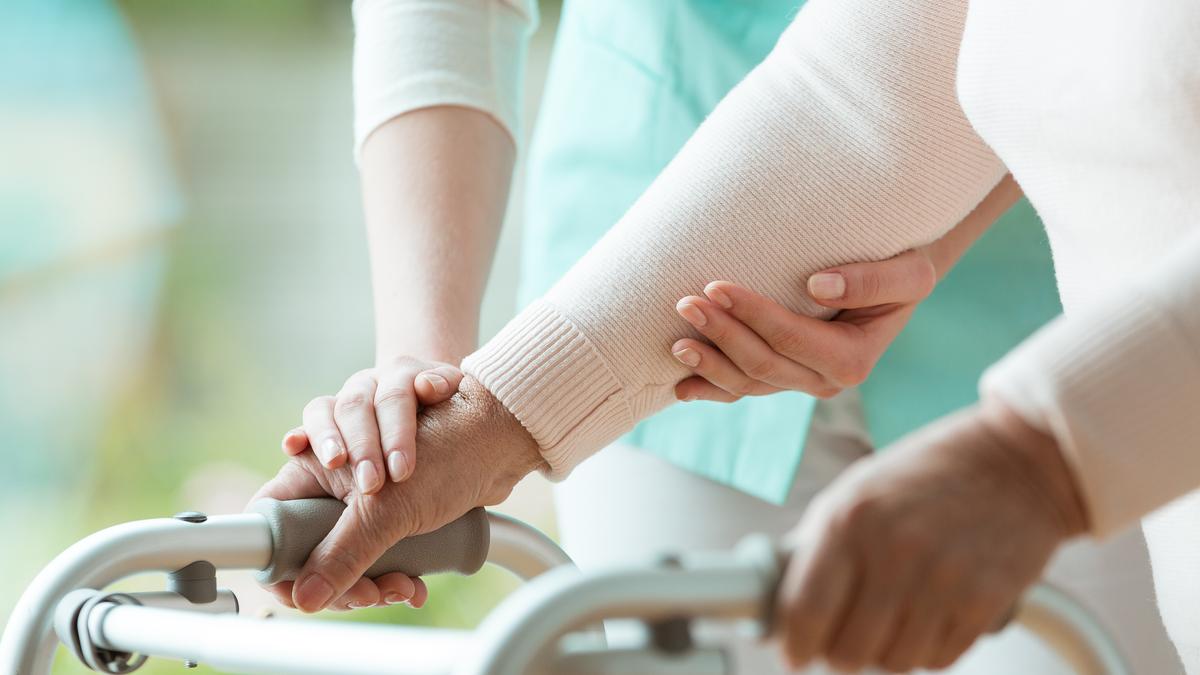
Parkinson’s disease, often viewed as an ailment of the elderly, is manifesting with alarming frequency among younger individuals in India. This shift not only challenges existing clinical perceptions of the disease but also poses significant socio-economic and public healthcare implications for the nation.
The tremors, stiffness, and slow movement commonly associated with the disease in old age are increasingly observed even in adults in their twenties, thirties and forties — at the prime of their lives. This unsettling trend demands more than just clinical attention; it calls for a systemic recalibration of how we understand, detect, and treat the second-most recurring neurodegenerative disorder in the world. The question is how can India redefine its healthcare strategies to include proper palliative care for Parkinson’s without compromising on its younger demographic, which is leading the country’s charge?
India is facing what can only be described as a dual burden — the expected increase of Parkinson’s disease in older adults and a growing tide of early-onset Parkinson’s disease. Compared with the global average age of diagnosis at around 60, India’s average is 51 — nearly a decade earlier. What is even more startling is that recent cohort studies in the Parkinsonism & Related Disorder Journal show that nearly 45% of patients develop symptoms between the ages of 22 and 49, a statistic that should trigger national concern. It means that India will have the highest absolute number of people with early-onset Parkinson’s disease, given its status as the most populous country.
The younger patients experience the disease differently. They are more likely to suffer from dystonia (abnormal muscle contractions), early onset of levodopa-induced dyskinesias (involuntary movements), and psychiatric complications such as depression and anxiety. Because they are younger, they face longer disease durations, years of medication adjustments, employment disruptions, and emotional strain. In short, they are neurologically compromised while still economically and socially active, making the ripple effect of the early onset far wider than it appears.
Despite these shifts, community-level data in India remain sparse, particularly from rural areas where access to care is limited. A 2021 Lancet Global Health review noted the need for comprehensive neuroepidemiology surveys in India, particularly those that factor in region-specific exposures and lifestyles.
Patients often go through years of misdiagnosis or dismissal, partly because physicians themselves are conditioned to rule out Parkinson’s in younger individuals. In women, symptoms are even more likely to be misattributed to stress or hormonal changes. This results in delayed intervention, missed therapeutic windows, and irreversible neurological damage. To address this, India needs structured rehabilitation models and public health messaging around Parkinson’s, especially for young patients.
Strengthening early detection
India’s expanding network of Ayushman Arogya Mandirs (erstwhile HWCs aka SHC) under the Ayushman Bharat programme offers an important opportunity to bring neurological screening closer to communities. Training primary care providers to recognise early signs of Parkinson’s, especially in younger individuals, can help improve early diagnosis and referral. Simple clinical checklists, community health worker sensitisation, and public awareness drives can reduce the delay in care-seeking and improve outcomes.
From a clinical standpoint, India presents a different biological profile. A recent paper on npj Parkinson’s Disease observed that genetic mutations common in Western patients (such as LRRK2 and SNCA) are rare among Indians, which suggests that environmental triggers such as pesticide exposure (notably paraquat), industrial pollutants, and air pollution could play a more significant role in this context. Yet these hypotheses remain underexplored due to the lack of large-scale, India-specific studies.
It is equally important to recognise that early-onset Parkinson’s often remains undiagnosed in rural and underserved populations, where access to specialised neurological care is limited. Women, in particular, face a higher risk of misdiagnosis or delayed diagnosis. Addressing these inequities requires focused public health messaging, telemedicine outreach, and mobile diagnostic camps in remote areas. Ensuring that Parkinson’s care reaches every corner of the country must be considered a public health priority.
Shifting the paradigm
India is driving a mixed approach towards tackling Parkinson’s disease, which relies on broad-based government health schemes and healthcare efforts made by private hospitals. However, the growing challenges, especially those related to young-onset and early-onset Parkinson’s disease, require a targeted response.
The National Programme for Health Care of the Elderly is strengthening geriatric care. Yet, these schemes must be broadened to address the growing complexity of the disease arising from inconsistent implementation and a lack of disease-specific strategies. Promising models, such as Himachal Pradesh’s telestroke programme, demonstrate how telemedicine can bridge access gaps and could be adapted to enable remote Parkinson’s disease care and follow-ups.
India can explore integrating patient-specific registries into the National Health Mission, expanding centres of excellence, and forging public-private partnerships to scale comprehensive, multidisciplinary care. The country should include Parkinson’s under Ayushman Bharat for insurance coverage, neurological diagnostics, and medications. Subsidising advanced therapies, such as deep brain stimulation, and supporting gene therapy trials can help India leverage its biotech capabilities while furthering advancements.
Comprehensive strategy
India has already recognised brain health as part of the expanded National Mental Health Programme , a welcome step. However, there is a strong need to operationalise and strengthen services for neurological disorders such as Parkinson’s disease within this framework. Tackling the dual burden of Parkinson’s calls for better integration under existing non-communicable disease initiatives, expansion of insurance coverage under PM-JAY to include neurological care, and building stronger referral systems from primary to tertiary care. Public-private partnerships, multidisciplinary care models, and investments in research and national registries will help India move from reactive care to proactive, equitable management of Parkinson’s and related conditions.
With a focused approach to genomics, gene therapy, early detection, de-stigmatisation, and research-led policy, India has a real opportunity to shift from reactive care to proactive preparedness.
(Dr. Madan Gopal is a health sector expert and works as an Adviser with the National Health Systems Resource Centre, New Delhi; Dr. Sanjay Pandey is Professor and Head, Neurology and Stroke Medicine, Amrita Hospital, Faridabad. Views are personal)
Published – April 11, 2025 12:21 am IST


